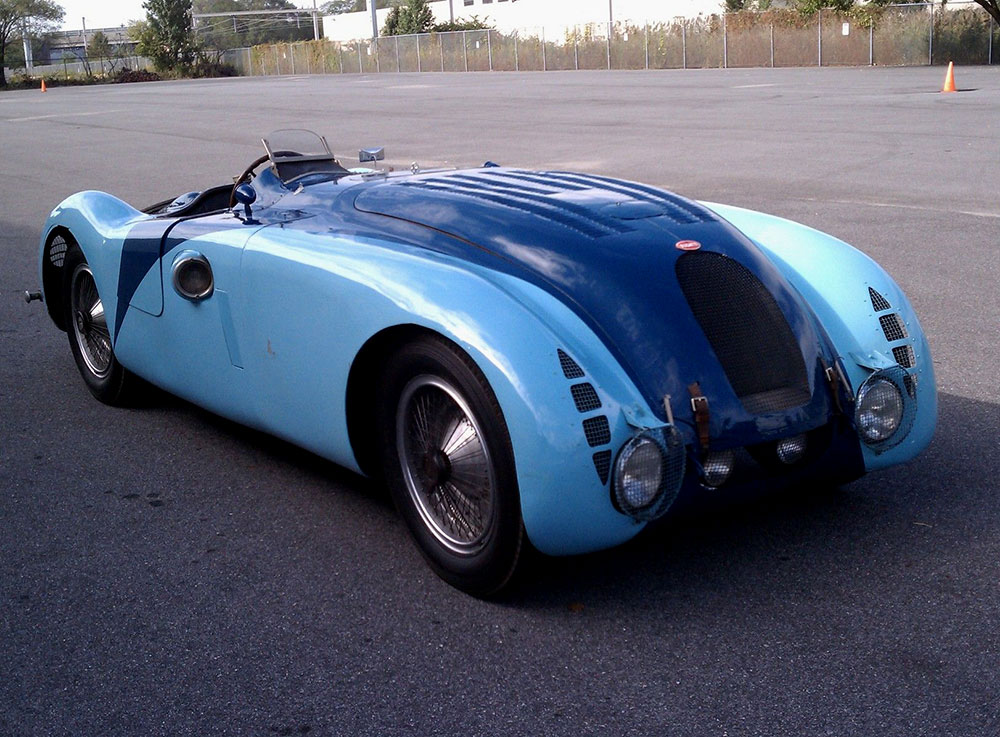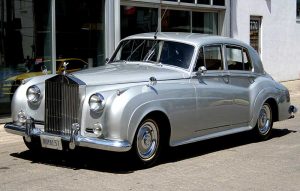The Bugatti Type 57G Tank was built in Molsheim in 1936 and 1937. Only three cars were produced at the Bugatti manufacturing plant in the Alsace.
With these racing cars, Bugatti aimed to lead the world of French motor racing to new victories, as at that time only foreign brands were constantly winning.
Jean Bugatti, son of the company founder Ettore Bugatti, pushed through an initiative to develop a sports car which could be used for long distance competitions. In order to ensure the lowest possible centre of gravity, it was decided to combine the standard type 57S chassis with the Bugatti 3.3-liter row eight cylinder and a wheelbase of 2.98 m. The engine of the 57G Tank delivers approximately 200 hp and, thanks to the aerodynamically designed body, could quickly reach higher speeds than that of the competitors at the time.
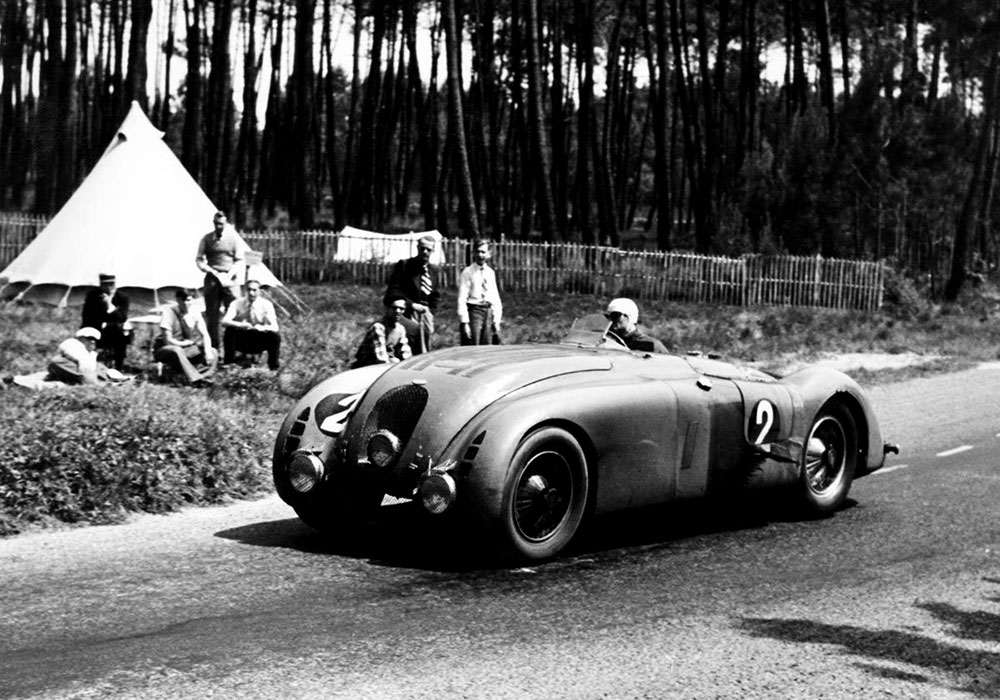
The car was on the road to success from the very beginning, with Jean-Pierre Wimille a fixture at the wheel. His first victories in the 57G Tank were won in 1936 at the Grand Prix de l’A.C.F in Montlhéry and the Grand Prix de la Marne.
For the Le Mans 24 hour race on July 19 and 20th, 1937, Bugatti registered two racing cars of this type. The first car was driven by test drivers Pierre Veyron and Roger Labric, with Jean-Pierre Wimille and Robert Benoist taking control of the second Tank. After only a short while, Wimille took the lead and ultimately won the race with an average speed of 136.99 km/h (84 mph) and a total distance of 3,287.938 km (2,043 miles). Thus, he was able to claim Bugatti’s very first victory in this legendary race, and became a brand legend himself.
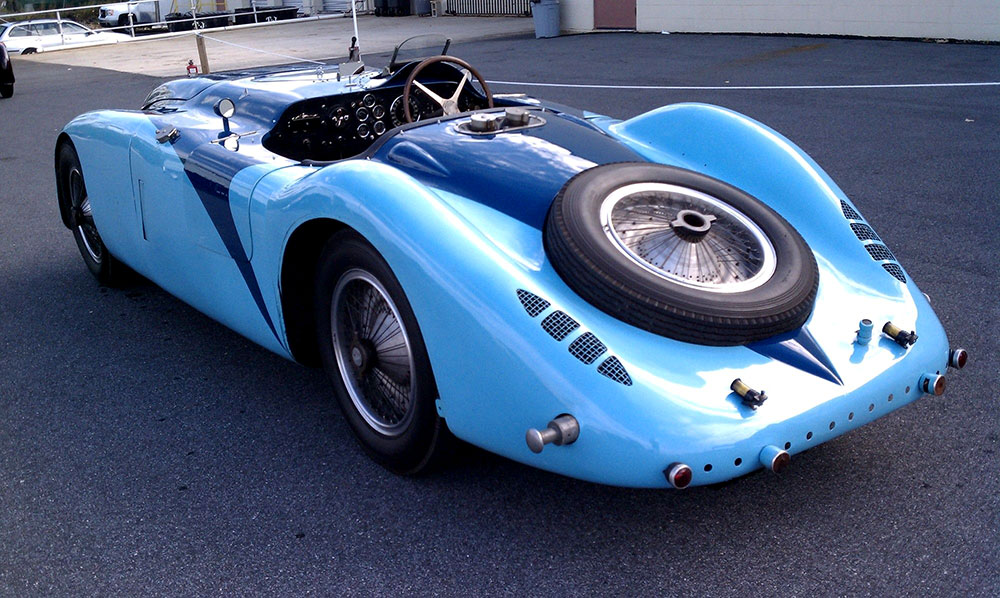
After Bugatti’s absence from the 1938 Le Mans, Jean finally convinced Ettore to race a single entrant in the 1939 race. The car was a ‘tank-line’ Type 57C, being much longer than the Type 57G. After Louis Gerard in his Delage retired, Wimille and Veyron were drove to victory and took another Le Mans win for the Type 57 chassis. Tragically, Jean Bugatti died testing the winning car on August 11, 1939. The car was never rebuilt.
Chassis 57367 is the sole survivor of three Tanks made in 1936. It is also one of the most important Bugattis, as this chassis, #57335, won the 24 Hours of Le Mans in 1937.
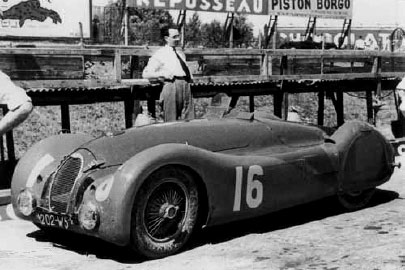
A special version of the 57G, called the Type 57S 45 was prepared for the 1957 Le Mans. It used the type 50B engine which was reported capable of 470 horsepower. It featured extra cooling beside the radiator hole and no apertures in the front wings.
How valuable this car was to its owner as, in an attempt to keep Nazi fingers off of it, they decided to bury the machine during the war, sticking it in a tomb of sorts so that the opposition wouldn’t be able to steal it.
This car has to survived underneath the surface of the earth for a period of time as a war was going on over top of it and the people who owned it were able to survive the war to eventually find the car once again and take it back up to breathe again int the post-war world.
Share this:
- Click to share on Facebook (Opens in new window)
- Click to share on Twitter (Opens in new window)
- Click to print (Opens in new window)
- Click to share on LinkedIn (Opens in new window)
- Click to share on Reddit (Opens in new window)
- Click to share on Tumblr (Opens in new window)
- Click to share on Pinterest (Opens in new window)
- Click to share on Pocket (Opens in new window)
- Click to share on Telegram (Opens in new window)
- Click to share on WhatsApp (Opens in new window)

